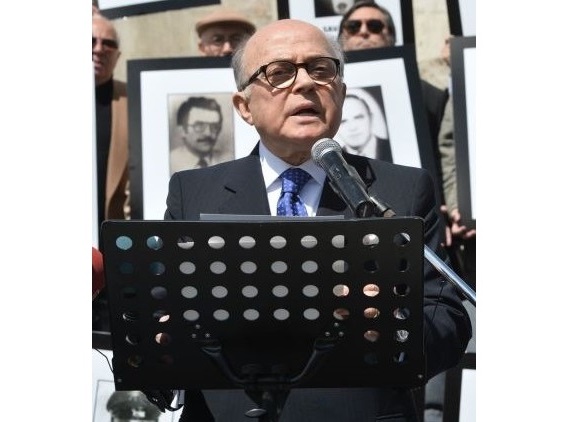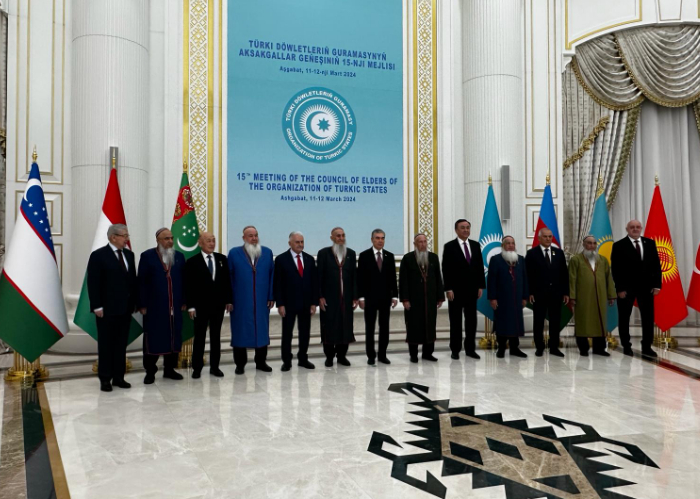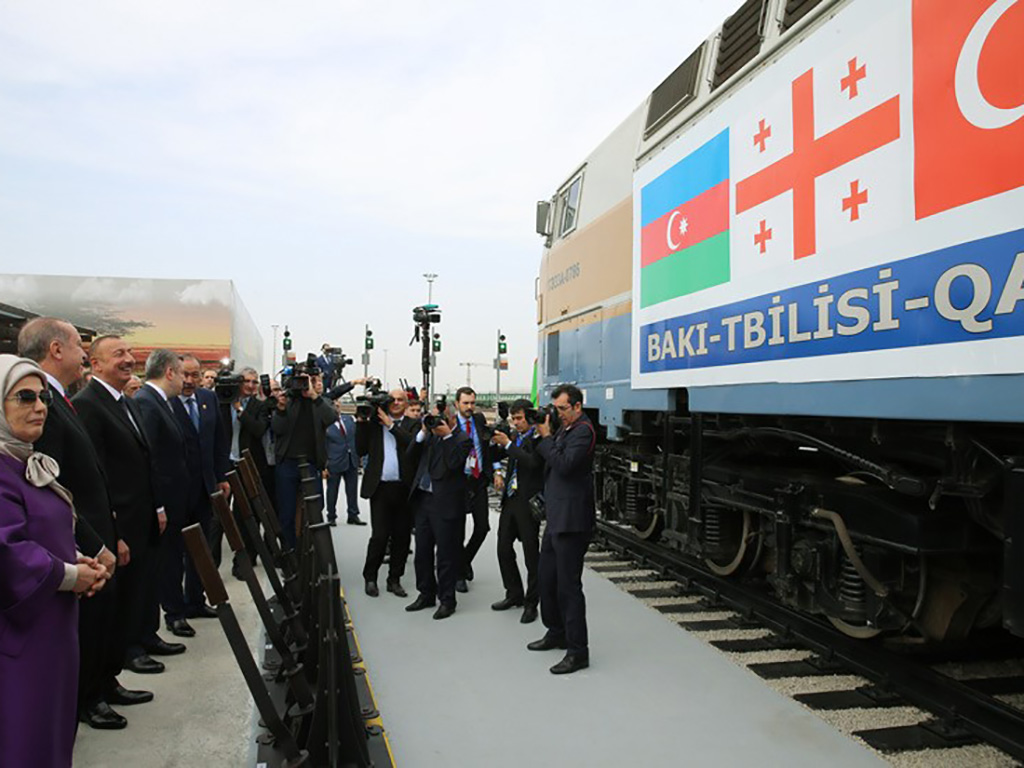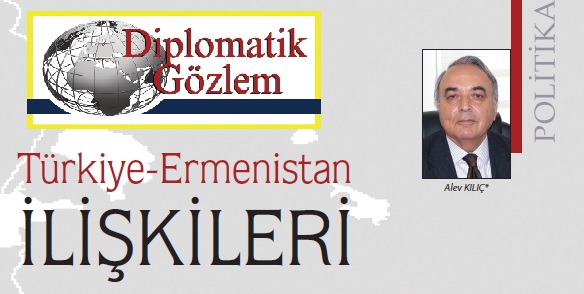Ahmet ERTAY
Ambassador (R)
The subject of “Iran’s nuclear program” was brought to the international agenda as a predominant and controversial item when an Iranian opposition group, The People’s Mujahedin Organization of Iran, revealed in a press conference in August 2002, that Iran carried-out nuclear activities in Natanz and Arak, evading inspections by the International Atomic Energy Agency (IAEA). Western states, notably the US and Israel, claimed without any delay that Iran was aspiring to possess nuclear weapons. Efforts put in since, have not yet ensured a resolution that will be approved by the parties.
A very complicated problem
It is not possible to see the whole picture regarding Iran’s nuclear program when observed solely from the perspective of Western sources. According to these sources, Iran has illegitimate nuclear activities according to international treaties and, thus, these activities should be prevented. However, the issue is much more complicated with is technical, legal and political dimensions.
At the outset, let us underline the following:
Concerns about Iran pursuing a nuclear weapons are rightful concerns. Iran advocates that it aims to develop alternative energy sources, nuclear energy among them, in order to preserve its fossil fuel reserves for future generations. The justification that Iran brings up to explain its nuclear activities does not bear much persuasiveness, for Iran does not have power plants to use the uranium it is enriching. Russians provide the fuel for the only power plant built by them in Bushehr. If Iran starts building another power plant now, it will take at least ten years. Yet, it cannot do it without any assistance. In the current conjuncture, who can give that assistance?
On the other hand, an important matter which the countries opposing the nuclear program of Iran want to go unnoticed is that all of Iran’s declared nuclear activities currently conducted under IAEA safeguards are legitimate according to the Non-Proliferation Treaty (NPT), to which Iran is a party.
The situation according to the NPT
NPT which came into force in 1970 is based on three pillars:
1. Non-proliferation of nuclear weapons
2. The right to peacefully use nuclear technology
3. Disarmament of countries that possess nuclear weapons
Non-weapon state parties to the NPT are obliged not to acquire nuclear weapon technologies, while nuclear-weapon states are under the obligation not to transfer nuclear weapons to non-nuclear weapon states. (The Treaty recognizes USA, UK, USSR/Russia, France and China as “nuclear weapon states”).
According to the NPT, it is the inalienable right of the parties to use nuclear energy for peaceful purposes, including developing research, on the condition that they do not manufacture nuclear weapons and pursue their activities under IAEA safeguards. The treaty encourages states possessing peaceful nuclear technology to share their capabilities with other states.
Legitimate peaceful activities also make way for nuclear weapons
There is, however, a dilemma on this issue: Process of producing nuclear fuel for energy purposes and process of building nuclear weapons overlap to a great extent. A state capable of producing nuclear fuel means that it has already passed the most difficult stage of acquiring nuclear weapons.
It would be useful to provide some technical information at this point.
Fuel production for nuclear plants is a five-staged process. It is called “the nuclear fuel cycle”.
1. Mining of uranium;
2. Milling of uranium to “yellowcake”, “milling”;
3. Conversion of “yellowcake” to UF6 gas, “conversion”;
4. UF6 gas is fed into thousands centrifuges spinning at ultrasound speeds and U235 isotope is released, “enrichment”;
5. Enriched uranium is encased in fuel rods that are to be used in the power plant, “fuel fabrication”.
It is sufficient to enrich uranium be used in power plants up to 5 percent, whereas research reactors need uranium enriched up to 20 percent. Uranium enriched up to 20 percent is called “low-enriched uranium” (LEU). Enrichment to higher percentages is called “high-enriched uranium” (HEU).
Uranium to be used in nuclear weapons, needs to be enriched up to a high level of around 90 percent. States with low-enrichment capabilities have the opportunity to continue with enriching with changes in centrifuge cascades in order to reach high percentages.
Enrichment to 20 percent, which is the upper limit of LEU, is in fact an issue of concern as well, as such progress provides an opportunity to reach higher percentages more rapidly and easily.
A separate ability is required to load the high-enriched uranium into a nuclear warhead. This is called “weaponization”.
There are other ways to manufacture nuclear fuel and to acquire a nuclear weapon. However, this article will not deal with these as this is presently not a matter of subject for Iran.
Iran has developed its nuclear activities in all the stages listed above and has succeeded in enriching uranium up to 20 percent. As will be mentioned below, there is no solid evidence of Iran’s activities of developing a nuclear weapon yet. However, IAEA reports have reflected suspicions about Iran having conducted studies on nuclear weapon technologies prior to 2003.
What are the sources of concern?
Given that declared nuclear activities currently pursued by Iran are in accordance with the NPT, what then are the sources of concern for countries such as the USA and Israel? They can be summarized as follows:
Their most important argument is that Iran kept its nuclear program, developed partly through international networks of nuclear smuggling, away from IAEA verification for almost twenty years. This cover-up, they claim, has raised serious concerns regarding Iran’s current ambitions, and that they are still not convinced that Iran is not carrying out illegitimate activities. In these circumstances, they demand the suspension of the program until the concerns are completely overcome.
As mentioned above, the development of nuclear fuel production capabilities means that the most difficult part of acquiring a weapon have already been passed. The concern is that Iran will develop its capability of producing nuclear fuel to stay at the “threshold” and, at the time of its choosing, will take a the political decision, and rush to acquire a nuclear weapon (threshold country), without leaving enough time for intervention by the international community. This is called break-out capacity. Although it has followed a different technological path, North Korea has acted in this way. It withdrew from the NPT when it reached the “threshold” and quickly conducted a nuclear test.
In the meantime, Iran is developing its long-range missile capabilities. It is probably not doing so to deliver conventional warheads.
Regional developments have basically increased Iran’s power. An Iran that has nuclear weapons or that is at the threshold will have a higher influence in the region. It will as well be more repressive in its relations. It will use its Shia-card in a more effective way in countries with Shia minorities (especially in the Gulf). It will create an existential threat for Israel and will encourage Iran’s non-state allies in the region that oppose Israel.
This can result in Egypt and Saudi Arabia, which view Iran’s activities as a direct threat to their interests, heading towards acquiring nuclear weapons. This will in turn start a new arms race in the region. (It is interesting that some western statesmen, including Obama, and western media have listed Turkey among countries that would pursue nuclear weapons. This deserves to be dealt with separately.)
Efforts to prevent in practice the exercise of the right of use accorded by the NPT
The NPT, as mentioned above, does not limit peaceful nuclear activities provided they are under IAEA safeguards.
When it strikingly appeared in the Iran case that nuclear weapons can be acquired by peaceful nuclear activities, efforts to eliminate the right to produce nuclear fuel for countries that do not have this “sensitive technology” were stepped-up. According to the view being promoted in various international fora by some countries, with the USA at the forefront, countries that do not possess the technology will be given assurances that nuclear fuel would be provided to them when the need arises at market conditions within the framework of international mechanisms. These countries, in return, will completely give up the right to acquire peaceful nuclear technologies accorded to them under the NPT. Thus, nuclear fuel production will be in practice left to the monopoly of about 10 countries currently possessing this technology.
Developing countries do not find these “assurances” for the supply of nuclear fuel - which is a strategic material- to be convincing. Therefore, they strictly oppose ideas that would make them dependent on outside sources and they categorically reject to give up their rights arising from the NPT.
Consequently, the case of Iran is seen as a “litmus test” by these countries. Their concern is that the initial suspension and then the total denial of Iran’s nuclear rights, or a substantial restriction thereof would become an international norm that would adversely affect their rights as well.
As will be mentioned below, Turkey’s stance is on the same track with those of the developing countries.
IAEA Safeguards as a condition
The NPT, as mentioned above, allows for peaceful nuclear activities provided that they are carried out “within the framework of IAEA safeguards system”. It would be useful to dwell shortly on this issue.
NPT, obligates the parties to conclude a Safeguards Agreement with the IAEA and open their nuclear facilities and materials to inspections by the Agency.
However, when it became clear in time that the authorization provided under these agreements is not sufficient to detect undeclared nuclear activities; the IAEA Board of Governors adopted the “Additional Protocol to the Safeguards Agreement” in 1992. The Additional Protocol recommended to the parties on a voluntary basis since it is not an instrument required by the NPT, grants the Agency comprehensive supervisory powers in countries that have become party to the protocol. These broadened powers enable the Agency to confirm “the non-existence of undeclared nuclear activity and material”, in the countries where the Additional Protocol is in force.
The Safeguards Agreement, required by the NPT, is in force between Iran and the IAEA. As for the Additional Protocol, it was signed by Iran in 2003, after the nuclear program was revealed, but was not ratified. However, it voluntarily put the Protocol into force for two and a half years between 2003 and 2006. Within this timeframe, the Agency conducted intensive inspections in Iran. The Agency, however, could not reach any evidence that illegitimate nuclear activities were carried out in the country.
Referral of Iran’s Dossier to the UN Security Council
In a decision adopted by majority in 2006, Board of Governors of the IAEA referred Iran’s dossier to the UN Security Council (UNSC) with the determination that Iran was in non-compliance with its obligations under the NPT. Iran, declared this decision illegitimate on grounds that the Agency’s Statute was violated. It resumed its nuclear activities it had voluntarily suspended during negotiations with EU3 (Germany, UK and France) in 2003. It revoked the voluntary application of the Additional Protocol and never put into force again.
Despite Iran’s objection, the dossier entered the UNSC’s agenda as a result of these developments. In the intervening time, the Council adopted six Resolutions some of which adopted sanctions against Iran. In these Resolutions, the Council demanded that Iran suspend its nuclear activities until the establishment of international confidence in the peaceful nature of Iran’s nuclear activities. Iran’s ratification and implementation of the Additional Protocol is also among UNSC’s and IAEA’s main demands.
Iran has not implemented these UNSC Resolutions which it considered as illegitimate. It is not hard for Iran to anticipate that, should it consider these resolutions as legitimate and suspend its nuclear activities, excuses to prevent “the establishment of confidence” would be easily found and that Iran would not never be allowed to resume its nuclear activities.
Alleged military studies
Neither the Agency nor any country have concrete evidence that Iran is currently conducting nuclear weapon studies. Allegations, related to years prior to 2003 are based on digital documents smuggled out of Iran and provided to the agency by a number of IAEA member states in 2005 and the following years. According to IAEA reports, “alleged military studies” may have continued after 2003 and some may still be continuing. Iran has complained that most of these digital documents, which it claims to be fabricated, are not shared with it for investigation. It is understood from IAEA reports that some of the documents are not shared with the IAEA either. Concerns reflected in the reports are based on information provided to the Agency.
As stated above, IAEA had carried out intensive inspections for two and a half years between 2003 and 2006 when Iran implemented the Additional Protocol. Therefore, the question of why the Agency could not discover the military studies asserted in the digital documents remains unanswered. Moreover, Iran persistently rejects that it made studies related to nuclear weapons at any time.
However, it should also be noted that Iran, putting forth various excuses, persistently fails to demonstrate the transparency requested by the IAEA. It does not open certain facilities and fields for inspection and does not let the Agency question certain experts. This attitude of Iran rightfully fuels concerns.
The International community is divided
Developing countries, as mentioned above, are concerned that denial of Iran’s right to access nuclear energy technologies will set a bad example for them. While these countries are against the proliferation of nuclear weapons, they are supporting Iran in international fora on the matter of access to technology.
On the other hand, there is no consensus among permanent members of the UNSC on the policies to be pursued against Iran.
China, which does not perceive Iran as a direct threat, is against harsh sanctions. Moreover, it is getting increased shares from the Iranian market vacated by others. It is dependent on Iranian oil. The Russian Federation, which has nuclear cooperation with Iran, is also against harsh sanctions. In addition, many western countries, are worried that their profitable trade and economic relations might suffer.
Therefore, the USA and the EU unilaterally imposed sanctions banning oil imports from Iran that they couldn’t put into force through the UNSC.
Case of Israel
Israel is not a party to the NPT and therefore, while being a member of the IAEA, it is not subject to the Agency’s safeguards regime. It ignores constant calls from the international community to join the NPT. Apart from Pakistan, Israel is the sole country in the region not a party to the NPT. Although it does not officially, it is not a secret that Israel, benefiting from this “advantage”, is in possession of nuclear weapons.
Ignoring nuclear weapons of Israel, a country occupying Palestinian territories and occasionally making armed interventions around it, but asking Iran, a country that does not occupy any foreign soil, to abandon its peaceful nuclear studies is lacking in objectivity. However, statements such as “Israel should be wiped off the map” made by former President Ahmedinejad is not helping Iran.
While the argument that Israel is surrounded by hostile countries and therefore needs a deterrent force is partly true, it is insufficient to explain the imbalance with regard to the NPT.
Turkey’s Stance
Although siding with its western allies regarding “non-proliferation of nuclear weapons”, Turkey differs from its allies and sides with developing countries on the topic of “legitimate access to peaceful nuclear technology”.
According to its declared policy, Turkey is against the proliferation and its neighbor Iran’s possession of nuclear weapons. However, it rejects the denial of or restrictions placed on the right to access peaceful nuclear technology using the Iranian case as a pretext. Turkey advocates that the Iranian nuclear issue cannot be solved by armed interventions or sanctions and that a solution should be found through negotiations. It supports initiatives to declare the Middle East a “nuclear weapons free zone”.
This is a consistent policy that protects Turkey’s interests. However, on the one hand, preventing the proliferation of nuclear weapons, and on the other hand, unfettered access to peaceful nuclear technology are currently mutually exclusive issues. This dilemma, along with the care taken to prevent the deterioration of relations with Iran, led to an inconsistency in Turkey’s policies and statements for a time. This inconsistency especially became apparent during Turkey’s simultaneous memberships at the Board of Governors of the IAEA and the UNSC (2009-2010).
In that period;
• In July 2009, at the Board of Governors of the IAEA, Turkey supported the Japanese candidate Yukiya Amano, who was backed by the USA and unwanted by Iran, for the post of Director General of the IAEA vacated by Mohamed ElBaradei;
• In November 2009, Turkey abstained on an IAEA Board of Governors resolution supported by the USA and the EU and expressing “deep concern” about Iran’s nuclear activities;
• At the IAEA General Conference in September the same year, Turkey did not vote in favor of a draft resolution opposed by the USA and the EU and calling on Israel to join the NPT and allow IAEA to inspect its nuclear facilities. Turkish delegation, lacking timely instructions from Ankara, had to leave the hall before the voting.
• 8 months later, at the UNSC, Turkey voted against a draft resolution imposing new sanctions on Iran.
While displaying this inconsistent attitude in international fora for a period, government officials made statements about their conviction that Iran was not in pursuit of nuclear weapons. However, such statements stopped as Turkey and Iran positioned themselves on opposite sides of the Syrian issue. Abandoning such statements is a positive development, as they led to the false perception that Turkey was a guarantor of the peaceful nature of Iran’s nuclear program. It must have thus become possible to give a clear and balanced messages to the concerned parties.
Efforts to resolve the problem through negotiations
Three options have emerged to settle the Iranian nuclear problem: a) negotiations, b) sanctions, and c) armed intervention.
Negotiations have given no result so far. It is understood that sanctions also did not make as grave an impact on Iran’s economy as was expected.
Besides causing a regional disaster, in response to an armed intervention Iran will almost certainly leave the NPT, expel IAEA inspectors and this time definitely conduct nuclear weapons studies. It is also clear that an armed intervention will not stop but will only delay nuclear studies. Former IAEA Director General ElBaradei’s words of “knowledge cannot be bombed” to stress the futility of an armed intervention made the headlines at the time.
It was understood that following the revelation of the nuclear problem, Iran, through Switzerland, made offers for a solution to the USA, but the Bush administration was not interested in them. Following this attempt, EU3 started negotiations with Tehran for the peaceful resolution of the problem within the framework agreed on in Tehran and Paris. Iran agreed to voluntarily suspend its enrichment activities over the course of the negotiations. Despite being displeased with the initiative of the EU3, the Bush administration did not take an obstructive attitude.
During these negotiations, EU3 offered Iran two packages. They did not, however, give the impression that they were taking Iran seriously at the beginning of the negotiations. As a matter of fact, Iran immediately rejected the first package which was prepared carelessly and even included elements insulting Iran. Iran also turned down the second package as it did not recognize Iran’s right to continue with enrichment. The election of the hawkish Ahmedinejad in August 2005, replacing the moderate Khatami, was one of the reasons that led the negotiations to an impasse.
When the EU3-Iran negotiations reached a deadlock, new proposals were made to Iran with the participation of the other three UNSC members (P5+1 or EU3+3) after 2006. Since some of them coincided with UNSC resolutions imposing sanctions, no progress was also made with these proposals which drew Iran’s negative reactions. Iran refused these proposals on the ground that it was asked to suspend its enrichment activities.
Thereupon, the US, within the P5+1 format, sat down with Iran at the negotiation table for the first time in June 2008 in Geneva. Negotiations in this format periodically continued during the Obama administration which came to power in 2009. Even though the new the US administration softened its rhetoric to a certain extent, it did not make any significant change on the “carrot and stick” policy of the previous administration. In fact, new UNSC sanctions, along with unilateral sanctions by the USA and the EU were imposed during this period.
In 2010, with the initiative of Turkey and Brazil, a nuclear swap deal was made between the three countries to ship the 5 percent low-enriched uranium produced and stockpiled by Iran out of the country and in return supplying Iran with uranium enriched to 20 percent it required for its research reactor in Tehran. However, due to USA’s dismissal, the deal did not go through.
USA’s declaration on every occasion that it will pursue a “carrot and stick” policy did not help the efforts to find a negotiated solution. The USA did not hide that what was meant by “stick” was harsh sanctions and even an armed interventions (the rhetoric of “all options are on the table”). It was very difficult for Iran or any country with self- esteem to accept USA’s stance that could be interpreted as “I will punish you if you don’t do what I tell you”. As a matter of fact, Iran did not.
On the “carrot” side of the equation, USA’s proposals were far from satisfying for Iran. The American President made proposals to Iran such as “solving problems through diplomacy”, and following the solution of problems, “Islamic Republic of Iran to take its rightful place in the international community”. Although the President’s use of the term “Islamic Republic” for the first time was interpreted as the USA’s possible recognition of the Iranian revolution and renunciation of its claim of regime change, Iran did not find these inconcrete proposals as satisfactory.
There was also no positive outcome in the meetings held in Istanbul and Almaty in 2012 and 2013.
USA’s softening of its insistence that Iran should suspend enrichment and Rouhani’s election as president in Iran reflected positively on the nuclear negotiations. On November 24, 2013, the parties came to an agreement on the Joint Plan of Action (JPA) in Geneva. There was no result in the initial six months of negotiations made until July within the framework of the JPA, which came into effect on January 2014. As the JPA aims to find a comprehensive solution to the problem within a year. The negotiations were extended until November 24, 2014. (A subsequent extension is made until June 2015)
Under the JPA, Iran preserved the right to produce low-enriched uranium up to 5 percent using its existing capacity, but voluntarily pledged not to build new facilities, not to expand existing ones and to dilute the surplus 20 percent enriched uranium. On their part, the P5+1 agreed not to impose new sanctions, to deblock a portion of Iranian assets and to lift the embargo on certain items required by the Iranian industry and civil aviation.
The elements of an eventual comprehensive solution are included in the JPA. According to these elements, in broad terms, the scope of Iran’s enrichment program will be defined, unilateral and multilateral embargos related to the nuclear program will be lifted, and Iran will comply with the certain transparency measures, including the ratification and implementation of the additional protocol.
The JPA can possibly be analyzed as follows:
1. In all the six resolutions adopted by the UNSC since 2006, Iran is required to suspend its activities until confidence is built about the peaceful nature of the nuclear program. Under the JPA, however, five permanent members of the UNSC, approved uranium enrichment in Iran, thus circumventing, albeit for a limited duration when the JPA remained in force, UNSC resolutions.
2. According to the NPT, uranium enrichment for peaceful purposes is the right of every state party to the Treaty. Although there is an argument that enrichment is not among the rights granted by the NPT, the P5+1 have always principally recognized the rights of Iran but have opposed its exercise until confidence is established. According to the Geneva agreement, however, they approved the exercise as well, even if for a limited period of time.
The Geneva agreement, while setting the framework for an eventual comprehensive agreement, stipulates that Iran’s future uranium enrichment activities will be determined by mutual agreement according to the country’s needs. That is to say, the likelihood of a full dismantlement and termination of Iran’s nuclear activities is tacitly removed from the agenda. A possible final agreement will determine if enrichment is among the rights enshrined in the NPT.
3. In return for these principal benefits, Iran, in broad terms, voluntarily (in other words, not as an obligation) accepts not to expand its current nuclear infrastructure and activities for the duration of the JPA. On the other hand, Iran in principal consents that restrictions could be imposed on its activities with a final agreement.
Conclusion
In accordance with the Joint Plan of Action, negotiations between P5+1 and Iran will be over on November 24. An agreement was not reached in recent meetings in Oman. A final effort will be put in Vienna on November 18. It is not clear what will happen if no positive outcome is reached until November 24. The parties, for now, state that the continuation of the negotiations is presently off the agenda.
The USA clarified that a solution is sought within the dynamics of the nuclear file. With this clarification, contrary to what many argue, the USA underlined that its approach was not to seek a solution to the nuclear through a “grand bargain”. It is not easy to argue that this is a realistic attitude. Just as a nuclear agreement reached with Iran will make a regional and global impact, it is not possible to expect that the central role played in the region by Iran , especially on the issues of Syria and terror, will not affect the nuclear negotiations.
Countries in the region must be convinced on the security dimension of a possible final agreement; Israel, Saudi Arabia and Egypt in particular. International press has reported that Israeli Prime Minister Netanyahu has already warned P5+1 leaders in a letter “not to reach an agreement with an unreformed Iran that threatens to eradicate Israel.”
On the subject of accessing peaceful technology, developing countries will examine the final agreement in terms of the rights granted by the NPT.
A potential agreement on the nuclear file will be an important step towards the normalization of relations between Iran and the West, the USA in particular. Lifting the embargos will open the Iranian market to western companies. American companies, according to press reports, have already started to show growing interests in the Iranian market and started to participate in fairs organized in Iran.
However, the nuclear file is not the only disagreement between Iran and the USA. Moreover, considering the mutual deep-seated mistrust that goes a long way back, difficulties during the implementation of a potential agreement cannot be easily ruled out.
*This article, its original in Turkish, was published at the daily AVIM bulletin on November 17,2014. Its translation was made by AVIM.
© 2009-2025 Center for Eurasian Studies (AVİM) All Rights Reserved
Henüz Yorum Yapılmamış.
-
 KIBRIS BARIŞ HAREKÂTIMIZIN 46. YILDÖNÜMÜNDE DÜŞÜNDÜKLERİM - 20.07.2020
KIBRIS BARIŞ HAREKÂTIMIZIN 46. YILDÖNÜMÜNDE DÜŞÜNDÜKLERİM - 20.07.2020
Tugay ULUÇEVİK 20.07.2020 -
 FROM COUNCIL OF ELDERS TO REGIONAL STANDARDS: HOW OTS TRADITIONS CAN GUIDE ELDERLY RIGHTS REFORM - 21.11.2025
FROM COUNCIL OF ELDERS TO REGIONAL STANDARDS: HOW OTS TRADITIONS CAN GUIDE ELDERLY RIGHTS REFORM - 21.11.2025
Berna SARICA and Teoman Ertuğrul TULUN 21.11.2025 -
 THE MILITARY HISTORY OF THE OTTOMANS IS COMPLEX - THE INDEPENDENT - 01.01.2019
THE MILITARY HISTORY OF THE OTTOMANS IS COMPLEX - THE INDEPENDENT - 01.01.2019
Edward J. ERICKSON 09.01.2019 -
 GEORGIA: THE BAKU-TBILISI-KARS RAILROAD: PEACE & PROSPERITY THROUGH THE REVIVAL OF THE SILK ROADS
GEORGIA: THE BAKU-TBILISI-KARS RAILROAD: PEACE & PROSPERITY THROUGH THE REVIVAL OF THE SILK ROADS
Dr. Reza YEGANESHAKIB 15.05.2019 -
 TÜRKİYE-ERMENİSTAN İLİŞKİLERİ
TÜRKİYE-ERMENİSTAN İLİŞKİLERİ
Alev KILIÇ 11.04.2017


